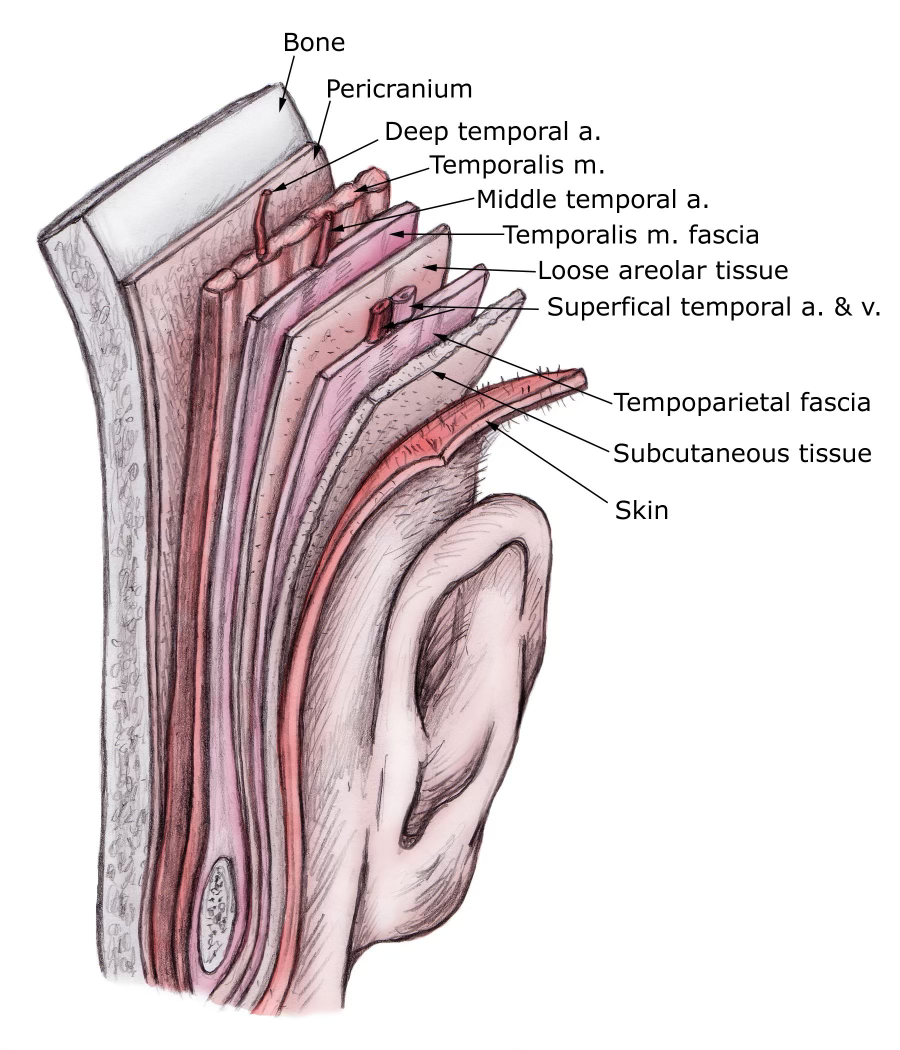Aging Temples - Their Anatomy and Filling for Rejuvenation
- Skin Worthy

- Jun 27, 2024
- 3 min read
Temples are never the first place a patient comes in asking to correct and have often been overlooked for years by both patients and practitioners alike. The temples are one of the most important and integral anatomical regions of the upper face. Loss of volume in this area is a part of the natural aging process and can lead to a skeletonize, gaunt or “peanut headed” appearance. At Skin Worthy our assessment of the face is holistic - not only from and aesthetic perspective but also from an anatomical perspective. Each individual area of anatomy has an inter-connected and significant impact on other areas and layers of the face.
Anatomy and Aging of The Temple

Anatomically the temple is described as a juncture where 4 skull bones fuse together, the frontal, parietal, temporal and sphenoid. Depending on the anatomist, it was argued that the temple was comprised of 7 layers and more recently 9-10 layers. It is a highly complex and high risk area, that requires an injector with experience.
The aging process of the temple is similar in its process to aging as in the rest of the face. It is actually in the temple where we visibly see hollowing as one of the earliest signs of aging. Since there’s already a natural concavity to the temples—actual hollows in the skull itself—you may see this area sinking faster than other parts of the face. It starts from the bone, our deepest layer of the face, where we see a remodelling and recession, then at both deep and superficial fat pads , our muscles shrink, and finally the skin thins.
The Impacts of An Aging Temple on Other Facial Areas
The temple starts at the edge of the lateral brow. With aging and volume loss this leads to loss of structural support of the eye/orbital area resulting in increased lines, wrinkles, or crows feet. This volume loss causes the eyes to “droop,” as well as creates the eye bags to deepen around the orbit. Deflation in the upper third of the face can make the brow appear heavy, the face more gaunt and the lower face wider in proportion. As the temples collapse, the cheekbones become exaggerated, emphasizing the peanut-head appearance. In the temples alone there is increased visibility of the temporal crest, the temporal vasculature, and thinning skin.

Youthful face to an upside-down triangle—but receding temples upend that geometry. The upper face narrows and the [overlying] skin drops, causing the lower face to sag and widen.
Benefits of temple filler:

•balance overall face shape
•reverse the inverted triangle of aging
•elicit a lifting effect of the mid and lower face, by utilizing Prof. Cotofana’s proven Line of Ligament theory (as seen in image)
•initial approach to improvement of Tear Trough deformity
•can improve crows feet especially when neuormodulators such as Botox no longer as effective
•aesthetic improvement of the lateral brow position (its becomes more forward facing)
•less gaunt appearance
•adds to continuity of cheek and beautiful light reflection
•the temple is considered a transition zone of the face and overall softens transitions zones of the face as seen in youth
Treatment of the Temples
Temples like other areas of the face are treated more narrowly- we aren’t looking at multiple modalities such as other areas. Most often dermal fillers are the main approach to temple rejuvenation. The most popular modality used for temple rejuvenation is hyaluronic acid due to its immediate results, and its safety profile as it is reversible. The temple is treated in two different ways - with either a needle - a deep injection, or with a cannula and fanned superficially. Technique chosen by the practitioner depends on patient needs, skin thickness, desired outcomes and practitioner preference.
Considerations For Temple Filler
Just as temples can cause a hollow gaunt appearance, it is important to know temples should still show a slight indentation in an adult. Overfilled temples can actually add a heaviness and swollen appearance. Aesthetic preferences also vary for each gender - males are intended to have more hollow temples than females, so correctional goals will differ. After temple treatment a patient may cause the lateral veins in the forehead appear swollen for a few days. This, along with soreness when chewing will resolve within a few days. Again, because temples are considered a higher risk area, a thorough assessment should be completed, informed consent discussed and an experienced provider is necessary.
The temples are an incredibly impactful area to rejuvenate, soften the sharpness of the lateral forehead and brings balance to the mid-face by blurring the bony borders between temples and cheeks, creating a soft, flowing, crescent-shaped contour that catches the light and brightens the whole face. To learn more about our injectable program or to book your 54321 consultation call or text us at 647-350-7546 or click here.








Comments